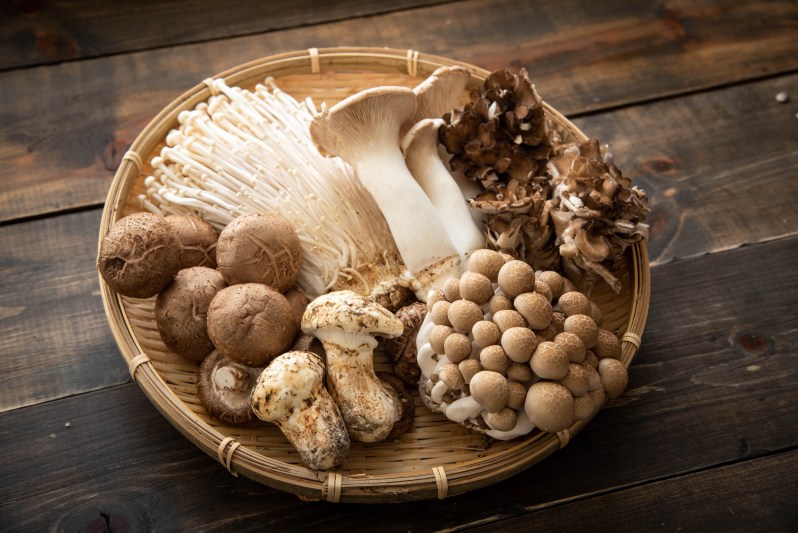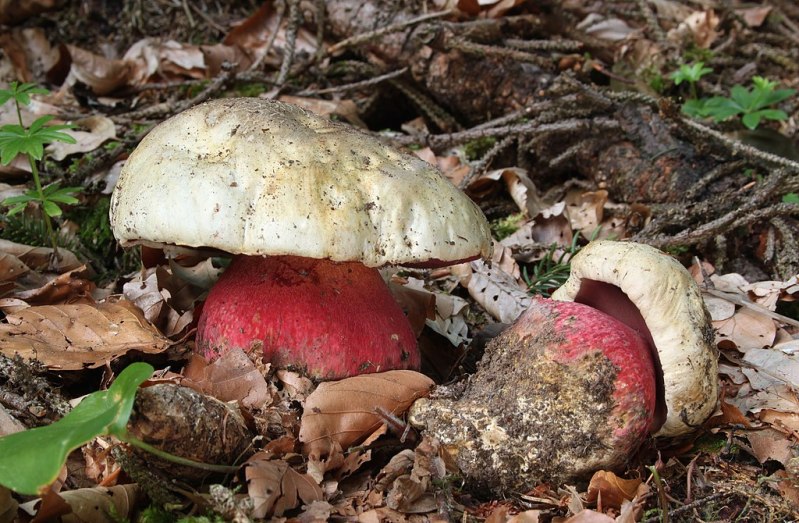Mushrooms are one of the luxuries of adulthood. I’ve never met a single child who likes mushrooms, including myself. But oh, when I discovered what I was missing, I certainly made up for lost time. Meaty, earthy, savory, and luscious, mushrooms are not only delicious, but a joy to cook with, and full of health benefits.
In recent years, as getting back to nature and homegrown food has become popular again, people have taken to the woods to forage and gather their own mushrooms. A fun activity, to be sure, but also a potentially fatal one. As delicious as many mushrooms are, there’s also a big list of ones that can kill you. The sneaky piece of it all is that it’s often difficult to tell the difference between those that are good, and those that are evil.
So if you find yourself with an urge to gather your own mushrooms, be sure to tag along with an experienced forager, or the consequences could be fatal. To get you started, though, here is a list of popular mushrooms that are safe and delicious, and a list of those that are definitely not.
Be careful out there.
Edible mushrooms

- Button – The most common grocery store mushroom, Buttons can be brown or white.
- Oyster – Uniquely and strikingly shaped, Oyster mushrooms have a slightly sweet and mild flavor.
- Enoki – Enokis have a long and slender shape that resembles bean sprouts. They are common in Asian cooking.
- Chanterelle – Bold, brightly yellow chanterelles are fruity and delicious, with a slightly peppery note.
- Porcini – Thick and sturdy, Porcinis are delicious in a number of preparations — even pickled!
- Shiitake – Once known primarily for their use mainly in Asian cooking, Shiitakes have recently started to make their way into Western cuisine.
- Black Trumpet – Most often dried, the Black Trumpet is also known as Black Chanterelle and the Horn of Plenty.
- Morel – Looking like tiny brains on thick stems, Morels are nutty, earthy, tender, and meaty. An absolutely delicious delicacy.
- White Beech – Growing in clusters, these mushrooms have a nutty, umami flavor when cooked, but can cause an upset stomach if eaten raw.
- Chicken of the Woods – Resembling the dress of a Flamenco dancer, this mushroom is bright, frilly, and, you may have guessed, tastes like chicken.
Poisonous mushrooms

- Death Cap – Simple and ordinary in appearance, the Death Cap one of the most poisonous mushrooms in the world.
- Deadly Conocybe – Dainty and deadly, these delicate little mushrooms can be as toxic as Death Caps.
- Destroying Angel – One of the most toxic species in the world, these pure white mushrooms have many edible look-a-likes, making them that much more dangerous.
- Satan’s Bolete – Distinct in appearance and easy to identify by their bright red stems, these mushrooms will make you terribly ill.
- Jack O’Lantern – Given its name due to its bright orange color, this mushroom can cause intense illness.
- Deadly Webcap – Similar in appearance to edible Funnel Chanterelle and Waxy Caps, Deadly Webcaps can cause complete kidney failure if consumed in large amounts.
- Angel Wing – Innocently named and beautiful, the Angel Wing can cause fatal encephalopathy.
- Inky Cap – This odd little mushroom is perfectly edible if eaten without alcohol. However, if mixed with alcohol, it can cause increased heart rate, digestive issues, and tingling in the limbs.
- Autumn Skullcap – Looking quite dangerously ordinary, Autumn Skullcaps contain very high levels of amatoxin and will often cause liver failure.
- Brown Roll-Rim – The Brown Roll-Rim is particularly nasty in its sneakiness. After immediate consumption, you may never know what harm it caused, but it will slowly cause your immune system to attack and rupture its own red blood cells.
Of course, knowing the names won’t help you identify edible mushrooms in the wild, so check out this handy guide. (Just remember, a lot of edible mushrooms have poisonous look-a-likes, so you’ll want to be really careful before eating anything.
Types of Mushrooms Infographic by Outforia




